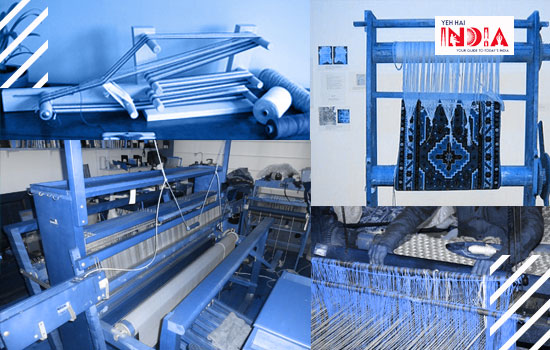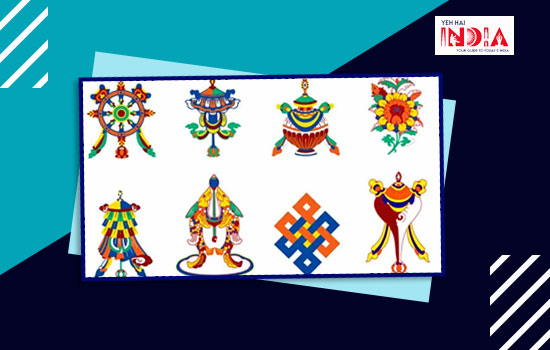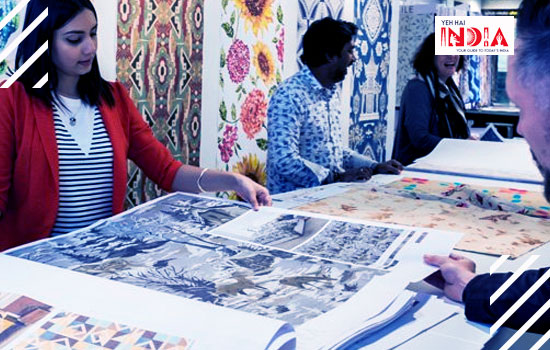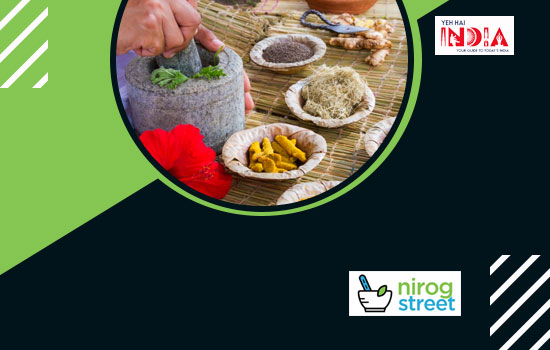Nestled in the peaks of Himalayas at an altitude of 2298 mts above sea level is the quaint hill station of ‘Munsiyari’ in Uttarakhand with mesmerizing scenic landscapes.
Munsiyari is also known as ‘Little Kashmir’ and in literal terms means place with snow. It is a paradise for adventure enthusiasts as the place holds various trekking and excursions unfolding the beauty at every level.
The trekking consists of two famous spots – the ‘Namik Glacier Trek’ situated on Kumaon Himalayas with many waterfalls originating from this very place.
The second one is the majestic ‘Panchchuli Peaks’, the group of five snow-capped peaks, which is a sight to behold especially when the clouds are passing by the peaks.
Where there is so much to do in Munsiyari, the other thing which it is famous for is ‘Weaving’ as the magic unfolds on the fabrics this time found in various products.
Weaving is a fascinating art of interlacement of warp and weft yarns in endless numbers of ways to create beautiful textures, fabrics and products.
Recommended Story – Chamba Chappals of Himachal Pradesh
The land of Munsiyari is full of artisans offering variety of mesmerizing hand loom weaves in a variety of products. The artisans believe that they are weaving their identity through these looms.
Let us get in depth of what and all the artisans of Munsiyari have in store for us.
Types of Looms –
There are four main kind of looms found in Munsiyari –

Inkle Loom:
This is a small portable loom, mainly used by the travelers wanting to utilize their time, by making narrow warp faced braids/belts on the loom.
There is a frame made of rigid wooden base with eight strong pegs, to carry the warp threads, through which the weft is woven one by one till the product is derived.
The formation of warp thread can be tricky because of the size of the loom, as it keeps going from one peg to another (edge to edge). Long, fine and string rectangular belts or straps are made using this loom which can be used efficiently in the daily life of the villagers.
Vertical Loom:
Vertical loom or Thaur Ranch has been used since ages to weave sheep yarn, cotton, goat wool and Ghari wool to put together products like carpets and ashans.
Its construction involves two beams on the top and bottom of the frame, which act as rollers to tighten the warp yarn.
After assembling the warp, coloured weft yarns are knotted between every pair of warps according to the designs from the graph, rough ends are snipped using scissors and the surface is made even using a comb.
As one length of weaving is completed, it is rolled on the lower roller and then the weaving is continued.
Shuttle Loom and Pit Loom:
This is a conventional loom type in which the loom is framed horizontally, parallel to the ground with components such as dhaga (yarn), warp beams, beah (harness), paddles, mesh (heddles), kanghie, shuttle and cloth roll.
This loom uses Angora wool, Merino wool and Pashmina wool to make thin, beautiful and sturdy fabric.
The difference between a shuttle loom and a pit loom is only that while a shuttle loom is placed entirely above the ground, the paddle of a pit loom is placed in a pit/hole in the ground.
Products like shawls involving fine work of very fine threads are made on this loom.
The Process
The process of weaving after setting up any loom involves the perpendicular interlacing of the weft yarn with the warp length yarn, which can be done in multiple ways.
The weft yarn could be tied on alternate warp yarn or can be made to go through the mesh of the warp structure; these both are the most common ways of hand weaving to be known till the present day.
Usually, the method of tying the weft yarn is done for making the carpets or ashans on the vertical loom while the other method is used on the shuttle or pit loom.
The Inspiration
The designs for the carpets and mats were highly influenced by the Tibetan market, which made the eight Tibetan symbols as the main motifs:

- The Endless knot
- The Treasure vase
- The Lotus flower
- Two Golden fishes
- The Parasol
- The Conch shell
- The Dharma wheel
- And the Banner of Victory
Though with the changing market and trends, better designs have started coming into existence.
Recommended Story – Handicrafts in India – Checkout the variety and craftsmanship
Design and Evolution

Munsiyari is famous for its bird festival which happens when around 375 species of birds migrate from different parts of the world to Munsiyari, so the designs started being inspired from birds.
These act as a perfect sovereign for the visitors who come to visit Munsiyari so eventually, these bird designs became quite exclusive for the products made in Munsiyari and cannot be found in any other place as the idea was originated here by the ladies who weave the carpets.
Present Day Scenario

Reviving art and craft from small towns have always been difficult, and the same is in the case with weaving happening in Munsiyari.
Although the artisans have been trying their best to ensure that it survives, they have been coming up with design modifications to suit the present market and have started to conduct weaving courses for people to learn.
With better technologies and faster methods to weave, it has been difficult for them to compete with the existing market. Many people refuse to encourage their kids to pursue this craft as their career because of loss of recognition.
Weaving is a customisable art which leads to increased range of products and flexibility in the design along with low capital investment.
Rising demands of handicrafts in developed countries and developing fashion industry along with collaboration with big brands to promote the craft can be a good opportunity to expand their market scope.
Even though it is a magnificent craft, there is a lack of infrastructure and awareness about this craft from Munsiyari among layman and about the new methods and designs among the artisans making the craft still confined to rural areas and small cities which have turned out to be a major weakness.
You can and must visit Munsiyari to buy these products. Spending time with the artisans will not only make you more aware of this craft but also you can get customised products according to your tastes and preferences.
Also Read – Ivory Handicrafts in India











Wow! I Didn’t know so much about looms and handicrafts